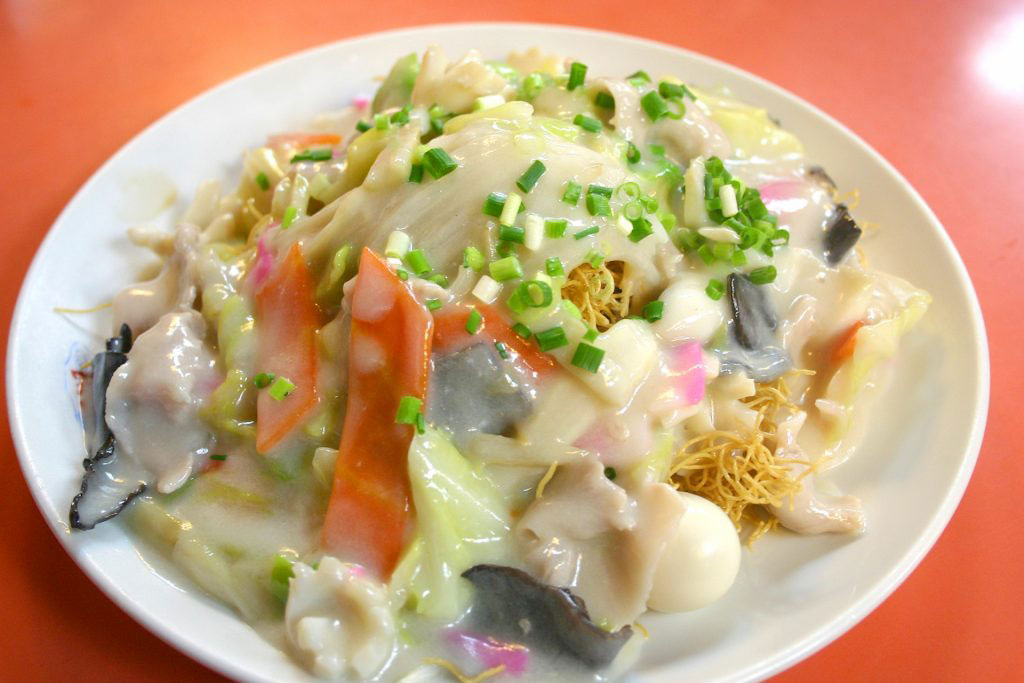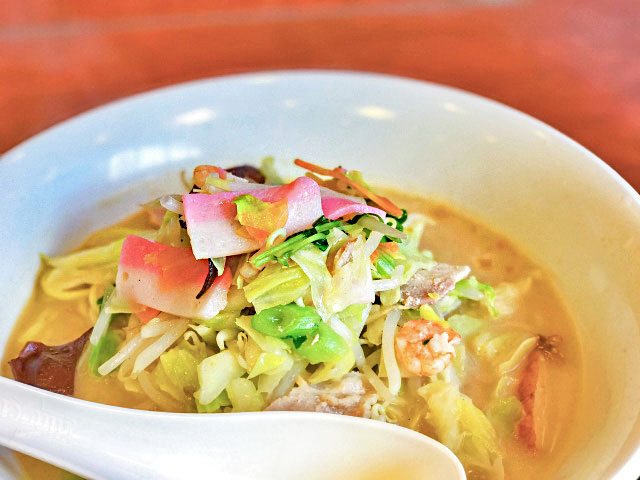Students. Hungry and poor. The history of higher education is irrevocably intertwined with the history of starving students and the cooks who figure out innovative ways to feed them healthful, nutritious foods for very little money. Chanpon is one of those perfect student meals, and now, a great regional dish from Nagasaki, Japan that was originally created for Chinese students visiting Dejima Island in the area.

As with many beloved foreign foods in Japan, chanpon was developed during the Meiji Period (1868-1912). During this era, Japan had opened its borders to the world, sharing knowledge and information, along with culture and food. Students from China would visit Nagasaki, a port city, and head to a local Chinese restaurant called Shikairo. According to the restaurant, the dish was based on a Fujian specialty called tonniishiimen. Korean jjamppong is very similar!
Chanpon is made with pork meat, seafood pieces, and seasonal vegetables, served in a bone broth with noodles. The meat, seafood, and vegetables are sautéed in lard, and the soup base is made using pig bones and whole chickens. The meat, seafood, and vegetables are fried first, then the broth is added directly to the pot. Finally, the thick, chewy noodles are added to the broth mixture and everything is cooked together to seal in the flavor.

Chanpon has become such a popular dish in Japan that different regions have created their own versions. In Shimane and Hyogo Prefectures, a version called ankake chanpon is made using a thick soy sauce soup base while in Akita Prefecture, the soup base is made with miso broth.
Have you ever tried chanpon? Ready to cook packages are available in most Japanese grocery stores in the US, so we hope you decide to make it one day! Be sure to share your story with us in the comments below.
Leave a Reply